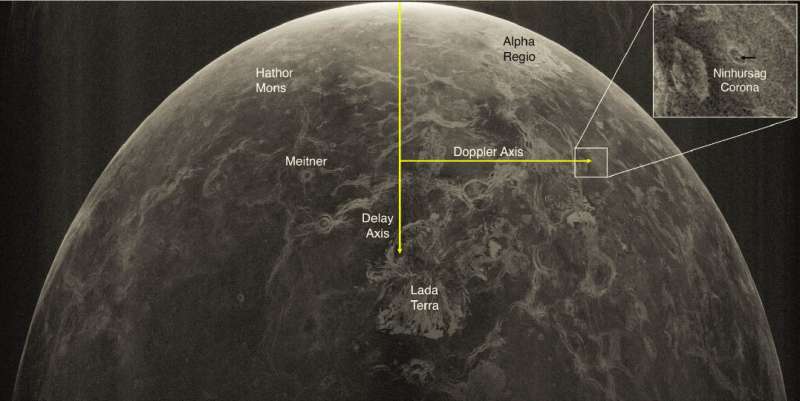The rotation of Venus

Venus is covered in a thick layer of clouds, one reason that it appears so bright in the sky. Ancient astronomers had a good idea of what (since Copernicus) we know as its orbital period; the modern measurement is that Venus takes 224.65 days to complete one revolution around the Sun, a Venusian year. Because of the clouds, however, it has been difficult to measure the length of the Venusian day since the nominal method of watching a visible surface feature rotate around 360 degrees is not possible. In 1963, Earth-based radar observations penetrated the cloud cover and were able to measure a rotation rate of 243 days; more surprising is that Venus rotates on its axis in the opposite direction from that of most planets, so-called retrograde rotation. Subsequent ground-based radar studies came up with inconsistent values for the length, differing by about six minutes. The Magellan spacecraft completed its 487 day orbital mapping program in 1991 and concluded the correct number was slightly different still: 243.0185 days with an uncertainty of about nine seconds. But subsequent missions and ground-based observations found that the rate of rotation was actually not constant but seemed to vary, with models arguing that solar tidal torques and atmosphere drag on the surface could account for at least some of the variation.
Knowing the rotation rate of Venus is critically important for future lander missions to Venus, like ones being considered for the next decade. The current rotation uncertainties correspond to a distance on the surface of about thirteen miles, more than enough to miss a landing site. To try to reduce the uncertainties, CfA astronomer John Chandler and the team of scientists to which he belonged undertook a new analysis of twenty-nine years of Earth-based radar observation taken between 1988 to 2017. They conclude that the mean Venusian day length is 243.0212 +- .00006 days. In particular, their formal uncertainty is the smallest yet obtained, although they note that their result is an average since it does not reflect short-term oscillations. In the next decade, the authors anticipate that further improvements will ensure that a Venus lander mission in the late 2020's will be able to succeed.
More information: Bruce A. Campbell et al. The mean rotation rate of Venus from 29 years of Earth-based radar observations, Icarus (2019). DOI: 10.1016/j.icarus.2019.06.019
Journal information: Icarus
Provided by Harvard-Smithsonian Center for Astrophysics





















